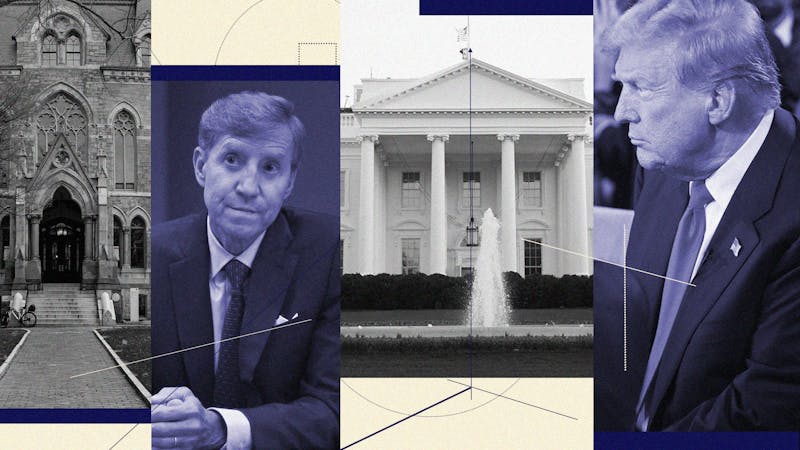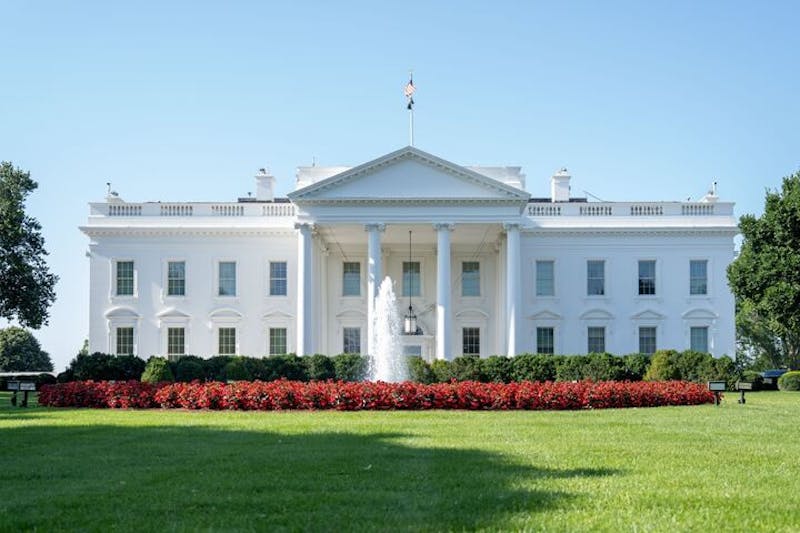
Throughout the year, undergraduate students walking down Locust Walk can be spotted wearing the Harry Potter T-shirts designed to correspond to their undergraduate schools: the College of Arts and Sciences as Gryffindor, the School of Nursing as Hufflepuff, the School of Engineering and Applied Science as Ravenclaw and the Wharton School as Slytherin.
While many students at Penn identify strongly with their home schools, most share classrooms with students from other schools, often for courses hosted in the College.
“In many respects, [the School of] Arts and Sciences sits at the core of the University,” SAS Dean Steven Fluharty said.
The College is the largest undergraduate school, containing 53 percent of undergraduates; Wharton is second with 23 percent of undergraduates; the Engineering School has 18 percent of undergraduates; the Nursing School has 7 percent.
“All of the liberal arts requirements of the other schools are met by taking classes in Arts and Sciences," Fluharty explained. "We provide the liberal curriculum to every student.”
This "liberal curriculum" requirement differs largely depending on the undergraduate school, but every school has humanities requirements that can be fulfilled only by courses in the College.
Wharton Dean Geoffrey Garrett said Wharton students obtaining a single degree will take 40 percent of their classes outside of Wharton. For the nearly one-third of Wharton students pursuing dual degrees, that percentage will be higher.
Engineering Dean Vijay Kumar said an average Engineering student takes half their classes outside the Engineering School.
The Nursing School — which Fluharty called “the most specific" school — allows its students to fulfill their six credits of sector and elective requirements in either the Nursing School or the College. The requirements for language and writing seminar, however, must be fulfilled in the College for all undergraduate students.
This structure means that the College, which already offers the most undergraduate degrees, is a foundational component necessary for every undergraduate degree and, as Fluharty said, “for every imaginable career.”
However, some students outside the College say they take courses in the College to take advantage of the school's breadth of majors, which are often less pre-professional.
"College classes can be less work and less stressful," Engineering sophomore Phoebe Altenhofen said, adding that although not every College class is easier, Engineering students tend to be attracted to the ones that are.
"In general, the classes that Engineering students use to fulfill their general humanities and social sciences classes are more for fun than anything else,” she added.
College sophomore Colleen Campbell transferred to the College from Engineering after she took the required introductory Engineering courses that were offered in the College, which is home to the Mathematics, Chemistry and Physics departments.
"Engineering classes were conceptually harder, but less involved, with fewer assignments," Campbell said. "The College has more assignments pacing you."
For students who call the College their home school, however, there is no requirement that forces them to take courses in any of the other three undergraduate schools. In fact, some College students who branch out of their school said the process can feel foreign.
"It may be that I’m a non-Wharton student, but I feel a difference between me and the other students [in my Wharton classes]," College sophomore Rebecca Suh said. "When you’re not a student in Wharton you feel a natural divide. It’s like if you were a Penn student sitting in at Drexel [University]; you would feel that natural divide.”
This divide is present on the administrative level as well. Each school has its own office, which makes key choices such as notifying its separate faculties about student deaths.
In terms of graduation requirements and day-to-day operations, the four undergraduate schools operate through their own specific administration. Each school receives its own operational budget, manages separate research partners and oversees its own faculty.
However, the school deans try to conceptualize their schools, at least academically, as part of a larger Penn ecosystem.
“People are coming to get a 'Wharton' education," Garrett said, "but they’re really getting a larger Penn education."
The Daily Pennsylvanian is an independent, student-run newspaper. Please consider making a donation to support the coverage that shapes the University. Your generosity ensures a future of strong journalism at Penn.
Donate






